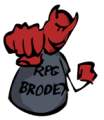- Joined
- Oct 5, 2018
- Messages
- 1,840
Island-hopping exploration and dungeon-delving exploration (even for small island mini-dungeons) is classic pirate D&D.Deadfire is not your typical Dungeons & Dragons adventure.
Forgotten Realms is based on real-life cultures, history, and folklore, too. That doesn't make it grounded. Deadfire is high fantasy, too, even if the magic doesn't get quite as extreme (but you still have liches and dragons and shit, and adra/animancy/souls can enable all kinds of shenanigans).The worldbuilding is grounded and based on real-life cultures, history, and folklore. Your typical D&D setting is generic high fantasy where anything is possible.
The main issue with the world in Deadfire is it feels like a big checklist of what the Watcher can do, as opposed to a region in a larger world like Fallout (or IE games or Kingmaker).Structurally it's much closer to Fallout: New Vegas. You have a large open world with multiple competing factions, and your actions determine the fate of the region in the ending slideshow.
Oh hey you're somehow the first guy ever to chart the entire Archipelago without help
Oh hey you ended slavery in the region all by yourself
Damn you fixed every problem in the Gullet
Lots of games allow for this kind of power fantasy, but not usually to this extent where you can fix absolutely everything you come across. That makes it feel reactive I suppose but it also makes the world seem small when the PC can have such a huge impact on problems of any scale. Especially since there is no urgency to complete the world-altering main quest.
Either there should be more emphasis on the factions and a smaller-scale, more personal plot, like New Vegas (I know the soul thing is supposed to be personal, but it has no real effect during the game, and pales in importance to the rogue god with potential world-ending goals), or less emphasis on the factions and a stronger main narrative to emphasize its importance.


















